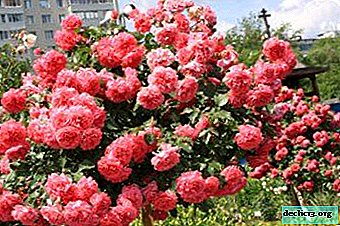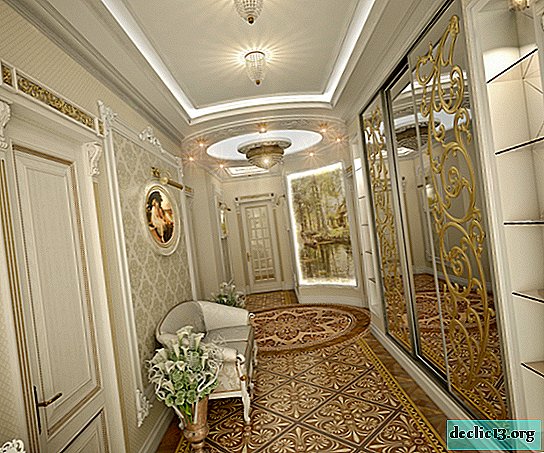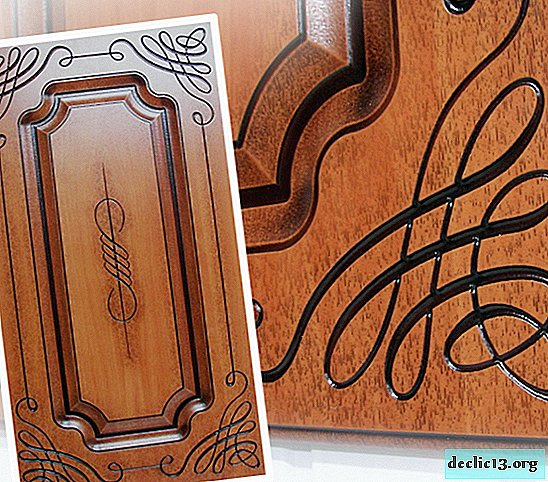Suleymaniye Mosque in Istanbul: the largest shrine with a photo
Istanbul can rightfully be considered the capital of mosques in Turkey. After all, it is here that the largest number of Islamic temples are located, the number of which as of September 2018 is 3362 units. And among these thousands of religious monuments, a special place is occupied by the Suleymaniye Mosque in Istanbul. What is the uniqueness of this outstanding building, and what secrets keep its walls, are described in detail in our article.

General information
The Suleymaniye Mosque is a grandiose complex of the Ottoman era, the largest Islamic temple in Istanbul, which ranks second in importance in the city. The structure is located in the old district of the metropolis on a hill bordered by the Golden Horn. In addition to the main building, the religious complex includes many other buildings that include: a Turkish hammam, a dining room for the homeless, an observatory, a madrasah, a library and much more. It is not surprising that such an ensemble of structures occupied an area of more than 4,500 square meters. meters.

The walls of Suleymaniye are capable of holding up to 5,000 parishioners, which makes it one of the most visited mosques not only among local residents, but also Muslim pilgrims from other states. The temple is also very popular among ordinary tourists, and such genuine interest is caused not only by the magnificent decoration of the building, but also by the tombs of Sultan Suleiman I the Magnificent and his notorious lover Roksolana located here.
Short story
 Suleiman i
Suleiman iThe history of the Suleymaniye Mosque in Istanbul dates back to 1550, when Suleyman I decided to build the largest and most beautiful Islamic temple in the empire. Famous Ottoman architect Mimar Sinan, who was famous for his talent for building buildings without an architectural plan, came to realize the idea of the padishah. When erecting the shrine, the engineer used a special construction technology in which the bricks were fixed together with special iron brackets and subsequently poured with molten lead.
In total, the construction of Suleymaniye took about 7 years, and as a result, the architect managed to erect a strong and solid building, to which Sinan himself predicted eternal existence. And after several centuries, his words were not doubted for a split second. After all, not one of the many earthquakes that shook Istanbul, like any fire in the building itself, could destroy the famous shrine.
Architecture and Interior
You can already understand from the photo of the Suleymaniye Mosque in Istanbul how majestic and solemn the religious complex looks. The height of the main dome is 53 meters, and its diameter reaches almost 28 meters. The mosque is decorated with 4 minarets characteristic of Islamic temples: two of them stretched to a height of 56 meters, the other two - 76 meters.

It is noteworthy that the entire architectural ensemble is located in the center of a spacious garden, at individual points of which numerous fountains of various sizes are installed. And the garden itself surrounds the school building or, as it is commonly called here, madrassas.

In the eastern part of Suleymaniye there is a large courtyard, inside which are installed the tombs of the sultan and his wife Roksolana (Alexandra Anastasia Lisowska). The tomb of the padishah is an octagonal structure with a domed roof, decorated with columns of marble. Inside the mausoleum there are seven graves, including the sarcophagus of the sultan himself. The interior of the tomb is dominated by marble tiles with traditional Islamic ornaments.

Near the mausoleum of the Sultan there is a similar-shaped tomb of Roksolana, where sarcophagi with the ashes of her son Mehmed and the niece of Bishop Sultan Hanim are also installed. The interior is completely different, but no less skillful. The walls of the tomb are lined with Izmir tiles of blue shades, on which the texts of poems are presented. It is worth noting that the dome in the tomb of Roksolana is painted white and there are no inscriptions on it. Thus, the architect wanted to emphasize the purity of the soul and heart Alexandra Anastasia Lisowska.

In addition to the decoration of the tombs of the Sultan and Roksolana, for the sake of which many foreign tourists come to the sights, the internal structure of the mosque is of great interest. The building has 168 windows, 32 of which are located on top of the dome. Thanks to this design of the architect, the rays of light are streaming in a thick stream from above from the dome to the floor, which creates a special atmosphere for the unity of man with God.

The architect’s talent also manifests itself in the decor of the mosque, where marble tiles and stained glass elements are found. The hall of the mosque is decorated with floral and geometric patterns, many of which are accompanied by sacred texts from the Koran. The floors of the building are carpeted in mostly red and blue. A special decoration of the hall is a huge chandelier of dozens of lamps, which are lit with the last ray of the sun.

The front courtyard of Suleymaniye, located on the western side of the complex, is decorated with marble columns, and you can get into it through three entrances at once. In the middle of the courtyard there is a square marble fountain, which serves for ritual ablutions in front of the prayer. On the facade of the mosque in this part of the complex, you can observe numerous ceramic panels with sacred inscriptions in Arabic.Find out RATES or book any accommodation using this form
How to get there
Suleymaniye is located 20 km east of Ataturk International Airport and 3 km northwest of Sultanahmed Square, the most visited in Istanbul. The mosque with the tombs of Suleiman and Roksolana is located on the city street, somewhat remote from the main attractions, but it will not be difficult to get here.

How to get to the Suleymaniye Mosque in Istanbul? The easiest option here is to order a taxi, but for such a trip you will have to pay a round sum. And if you are not ready to spend big money on travel, then feel free to go to the T 1 Kabataş-Bağcılar tram line and go to the Laleli-Üniversite stop. The cost of such a trip will be only 2.60 tl.
After you get off the tram, you will have to overcome a little more than a kilometer on foot to the attraction itself. Since the mosque is located on a hill, its minarets will be in your field of vision even from a long distance. Just follow them along the city streets to Süleymaniye Avenue, and after 15-20 minutes you will be at your destination.
About the observation platforms of Istanbul, see the information on this page.
Compare accommodation prices using this form
Practical information

The exact address: Süleymaniye Mah, Prof. Sıddık Sami Onar Cd. No: 1, 34116 Fatih / İstanbul.
Opening hours of the Suleymaniye Mosque: tourists can visit the tombs of Suleiman I and Roksolana, as well as the temple itself daily in between prayers.
- In the morning from 08:30 to 11:30
- From lunch 13:00 to 14:30
- After lunch from 15:30 to 16:45
- On Fridays, the doors of the mosque for tourists open at 13:30.
Cost of visit: the entrance is free.
Visiting Rules

Before heading to the Suleymaniye Mosque in Istanbul, be sure to study the opening hours of the complex. Despite the information indicated in many sources that the attraction is open from 8:00 to 18:00, it is important to understand that the institution gives other time for tourists to visit, which we described in detail a little higher.
In addition, during a tour of the temple and the tombs of Suleiman I and Roksolana, you must adhere to a strict dress code. Women must necessarily cover their heads, arms and legs, and trousers here are also taboo. Men are not allowed to enter the shrine in shorts and T-shirts. Before entering the mosque, every visitor must remove their shoes.

Within the walls of Suleymaniye, it is necessary to observe order and silence, you must not laugh or talk loudly, and it is also important to respect other parishioners. Shooting with a camera and phone is prohibited, so taking a photo of the Suleymaniye Mosque with the tombs of Roksolana and Suleiman without breaking the grafts is very problematic here.
Read also: Prices for excursions in Stabul + an overview of the best offers.
Interesting Facts
Such an outstanding building as Suleymaniye cannot but hold secrets. And the legends that were built about this building centuries ago, are heard to this day.

One of them says that even before the construction of the mosque, the prophet Mohammed appeared in a dream and indicated the place of construction of the future shrine. Having woken up, the sultan immediately called to his house the architect Sinan, who, having come to the lord, admitted with excitement that he had had the same dream at night.
According to another story, Suleiman was very unhappy that the construction of the mosque was delayed for many years. His rage warmed up even more the gift sent from the Persian Shah - a chest with gems and jewelry. With a similar gesture, the Persian wanted to hint that the Sultan simply had no funds left to complete the construction. Of course, such mocking gifts insulted Suleiman and aroused great anger, in a fit of which the padishas ordered to block the sent gems into the foundation of the shrine.

Another legend is associated with the incredible acoustics in Sulaymaniye, which Sinan managed to achieve in a very non-standard way. To achieve the desired effect, the architect ordered that jugs of a special shape be built into the walls of the mosque, allowing them to reflect sound well. At the same time, rumors reach the padishah that his architect completely lost his hands, abandoned the construction, and only does that he smokes a nargile for days on end. The angry sultan decides to go to the construction site himself and, upon arriving at the site, really catches the master with a hookah in his hands, but he does not detect any smoke. It turned out that the architect, gurgling water, measured the acoustic properties of the mosque. As a result, Suleiman was pleased with the incredible savvy of his engineer.
But these myths are not the only thing that is curious to learn about the famous refuge of the tombs of Roxolana and the padishah. There are other interesting facts, among which it is worth noting the following:

- Hamam (Turkish bath) operates on the territory of the attraction to this day. And today, guests of the complex have the opportunity to visit the Roksolana bath for an additional fee. But it’s impossible to get to the eminent bathhouse alone: after all, it’s a boorish of a mixed type, and only couples are allowed into it.
- In 1985, UNESCO took under international protection a religious complex, listing it on its World Heritage List.
- If you take a closer look, then in the Suleymaniye hall you can see large ostrich eggs suspended between the lamps. As it turned out, the eggs do not serve as an element of decor, but as a method of combating insects, especially with spiders that try to stay away from these birds.
- The four minarets of the Islamic temple symbolize the rule of Suleiman as the fourth lord of Istanbul.
- It is worth mentioning that Roksolana died 8 years earlier than her husband, after which her remains were buried in the walls of Suleymaniye. However, the padishah could not accept the departure of his beloved and a year later he gave the order to build a separate tomb for Roksolana in the mosque, thereby perpetuating the memory of his wife.

Note! If you are limited in time when walking around Istanbul, look at the Miniature Park, which presents models of many attractions not only in Istanbul, but throughout Turkey. Read more about the park here.
Output
Undoubtedly, the Suleymaniye Mosque in Istanbul can be ranked among the most interesting sights of the city. Therefore, arriving in the cultural capital of Turkey, along with the Blue Mosque and Hagia Sophia, be sure to visit the largest temple in the metropolis.
















